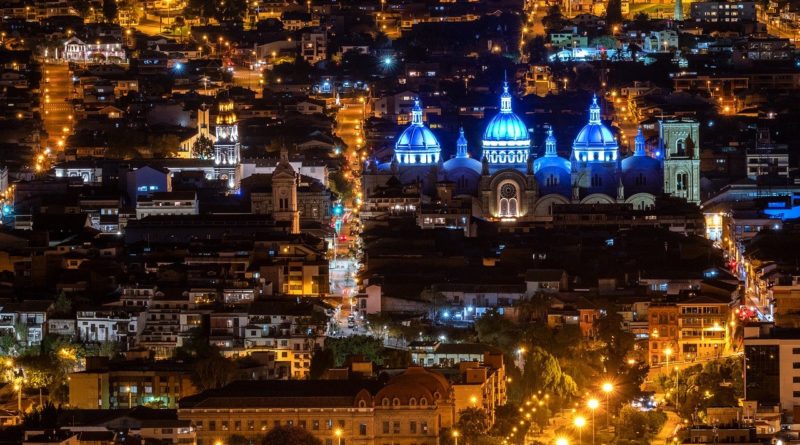Highlights of the best attractions and adventures in Cuenca, Ecuador
As proven by several awards and recognitions, including the Cultural Heritage site in 1999, Cuenca in Ecuador is a top and unique destination for travelers. Located at an elevation of 8500 feet on the Andes Mountain, it hosts more than a million visitors every year. All over the Cuenca are stunning Spanish colonial architectures dating back to over 500 years. Unarguably, one of the most beautiful cities in Latin America, it competes with Quito. The easy and obvious pick for first-time travelers when visiting Ecuador is Quito, the country’s capital, and Cuenca as a side trip in the itinerary. However, Cuenca possesses a unique, ‘wow’ charm with stunning architecture, exotic dishes, excellent shopping experience, fair and agreeable weather, picturesque alpine landscapes, and natural landmarks in volcanoes, waterfalls, and lagoons – all part of a breathtaking, picturesque landscape.
- The weather and altitude challenge
Pack your light sweaters when visiting Cuenca. They come very handily. Though located on the equator’s south side, the temperature rarely exceed 63 degrees Fahrenheit and below 40 degrees Fahrenheit. According to tourists’ experience and the tourism score, March to May is the best month to visit for warmth, less rain, agreeable weather, and, most importantly, clear morning skies for outside adventure and sightseeing. Thanks to Cuenca’s unique location in the protected valley, the climate is relatively more stable than other cities around the Andes.
- Favorite dishes and restaurants in Cuenca
The committed gastronomes may not find the collection of dishes in Cuenca extraordinary but still packs excellent traditional Andean dishes and seafood options to get anyone’s mouth water for an affordable price. Two traditional staple dishes are Arroz con Pollo and Arroz con Camarones, they are Latin American variations of rice and chicken, and rice and shrimp, respectively. There is no shortage of options from affordable to high-class restaurants when it comes to where to eat a delicious meal in Cuenca. Popular seafood is Ceviche, a mix of different raw fresh fishes with lime juice, spices, and seasonings. It is best enjoyed at the beaches for as low as $5. Hard to speak about the food scene without mentioning the delicious coffee and chocolate, made from rare cacao found majorly in Ecuador.
Explore the UNESCO-listed colonial city center
Time seems to be at a standstill with the city retaining the 16th-century feel and look. The city preserves its history dating back to 1557 and rich culture not experienced in a museum, unlike several colonial towns, but on the street. Santa Ana de Los Ríos de Cuenca, positioned strategically between Quito and Lima, has notable monuments including Old Cathedral, New Cathedral, and Carmelite Monastery. There is no shortage of great spots for that memorable photo catalog with several ancient but richly decorated balconies that put you a few centuries back. Many of which were transformed from colonial buildings to residential in the 19th century.
Cajas National Park
33 kilometer to the northwest west and about a 45-minute drive from the city center, dominated by colonial architectures, is a fantasy land that is 4,000 meters above sea level. Scattered across a vast 70,000 acres wilderness are several natural wonders that include 768 lakes, mountains, lagoons, waterfalls, rich collections of orchids, and wildlife for a fabulous hiking experience breathtaking views. Your best option of making the most of your hike to Cajas National Park is using the services of a tour agency.
Ingapirca Ruins
Before the Incas arrived around Ingapirca in the 15th century, the indigenous people of Cañari lived in the area. The history of the struggle for control of the area that ensued between the Incas and Cañari is sketchy. The Incas dominated the Cañaris and built a wall around the area. Hence the name Ingapirca translated as “Incas Ruins.” Located strategically on a height of 3200 above the sea level, it is overlooking the surrounding valleys of the Andes. Despite that, the Spanish invasion overpowered Ingapirca later in the 16th century and destroyed parts of the site. What is left on the fascinating site is about 80km from Cuenca. It remains impressive, including 37 feet long, 12 meters wide elliptical Temple of the Sun and ngapirca Pilaloma and Shrine.
Canyoning in Cuenca
Feeling adventurous? Experience of a rush of adrenaline while descending from the Cabogana, Cuenca. Jump, scramble, climb, swim, rappel, slide across, and through waterfalls while enjoying the beautiful scenery. If you don’t know much about canyoning, don’t worry about it. Local tour operators are on hand to provide you with gears such as helmets, harnesses, and swimsuits and teach proper canyoning techniques. No perfect way to enjoy the best of nature while releasing adrenaline than Canyoning in Cuenca.

